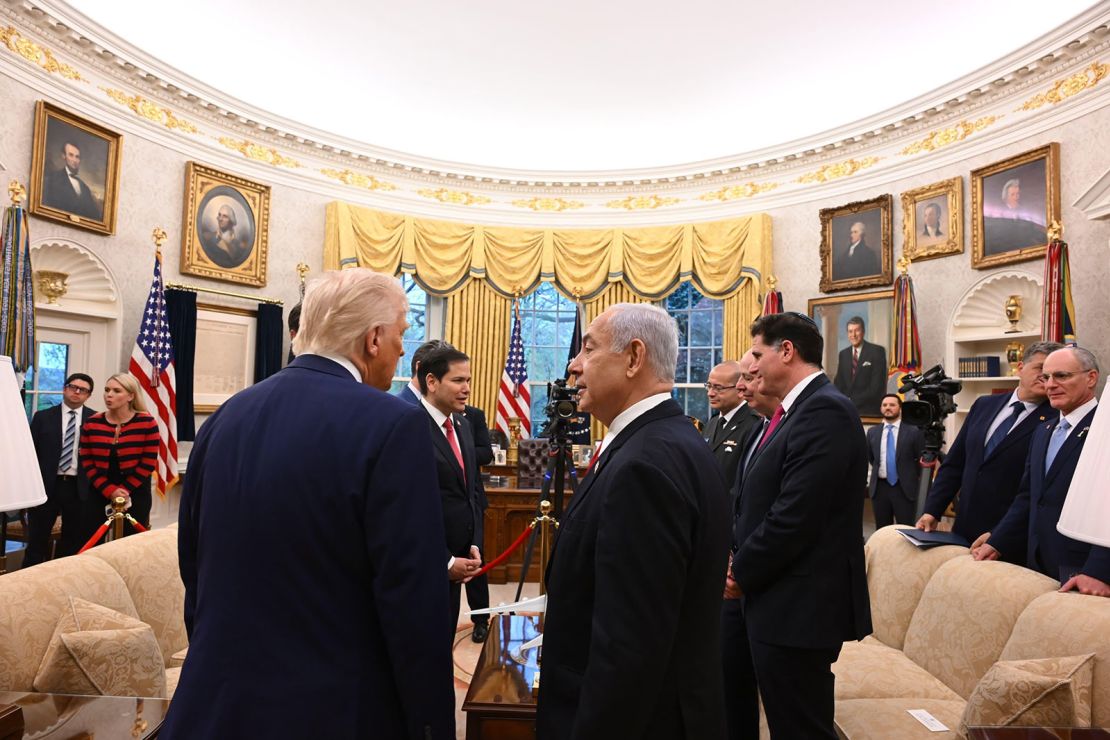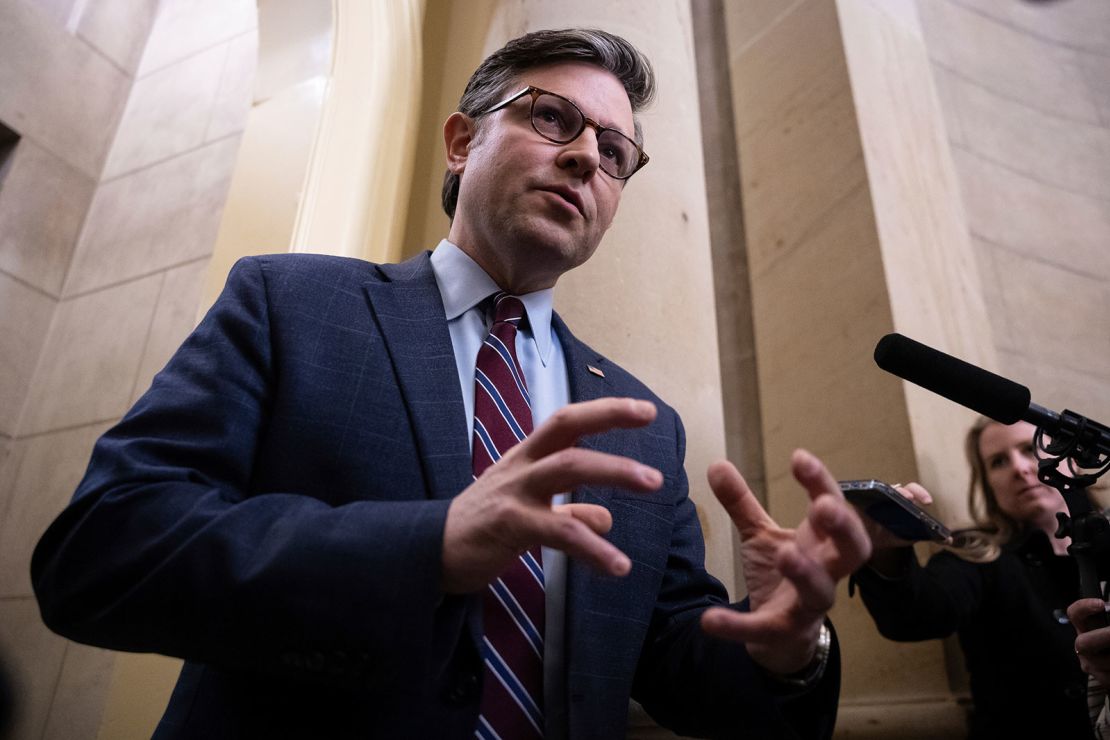CNN
—
President Donald Trump doesn’t look like he’s going to blink.
Chaos and fear unleashed by his “Liberation Day” trade war has only made him more adamant about his lifelong conviction that the world’s greatest economy is a victim of cheating rivals bent on ripping it off.
Trump did say Monday he’s open to trade talks with powers like Japan and Israel. The prospect of nascent negotiations meant there was no repeat of gargantuan losses of last week on US markets.
But he also threatened to raise cumulative tariffs on China to over 100% — a move that could lead to massive price increases for US shoppers for iPhones, computers and toys. He also implied that the America’s erstwhile friends in the European Union were such implacable foes that there can never be a fair deal.
Trump’s attitude seemed to dash the hopes of some observers — including some Republican senators — that he’s simply trying to create leverage to get better trade conditions for the US. And judging by his comments during an Oval Office press availability, foreign trade negotiators will bang their heads against a brick wall if they seek traditional pacts that allow each side to claim they emerged victorious.
“We can make a really fair deal … a good deal for the United States, not a good deal for others,” Trump said, explaining his approach. “This is America first.”
The president’s refusal to bend means that the risks that his policies could trigger a loss of global economic confidence and raging inflation will grow. That may even include the “economic nuclear winter” that hedge fund boss Bill Ackman invoked Sunday.
Perhaps at some point, the economic and political consequences will hit such a critical mass that they force him to change course. But that equation is a daunting one, since it would become all about how much pain Americans can bear.
So far, however, a president who believes he enjoys almost absolute power and who has torn off the constraints of his first term is not looking for an off-ramp. And his zeal for confrontation and sense of mission may also have implications beyond the economy and for other policy areas — such as his expansionist designs on Greenland and Canada, his mass migrant deportations and cultural warfare.
“Nobody but me would do this,” Trump told reporters. “You know, it’s nice to serve a nice easy term, but we have an opportunity to change the fabric of our country. We have an opportunity to reset the table on trade.”
It’s hard to work out what is next because there’s a massive contradiction at the center of Trump’s policy.
He insists he’s trying to restore the late 19th-century glory of America’s manufacturing base — a project that would require protectionism for years to come and even permanent tariffs. But he and top aides also say they are open to negotiations on trade deals — a process that would by definition fall short of the complete overhaul of the global trading system the president is after.
“Both can be true. There can be permanent tariffs and there can also be negotiations because there are things that we need beyond tariffs,” Trump said during an Oval Office appearance with Israeli Prime Minister Benjamin Netanyahu.

That dynamic seems to offer little for potential US negotiating partners.
Hopes of swift resolution to the trade crisis may also founder on the absolute conviction of Trump’s beliefs on trade — one of the few consistent ideological principles of his life as a businessman and politician.
His ideas appear to make sense only according to his own internal logic and conflict with accepted economic theory, the advice of experts or even reality.
The complexity of any trade talks US partners may face was also laid bare in Trump’s meeting with Netanyahu.
The Israeli prime minister brought with him a proposal to eliminate Israel’s trade deficit with the United States — after America’s sworn friend was hit by a surprising 17% duties last week. But when asked whether he’d cancel the tariff in return, Trump revealed his view that even allies are taking from the United States. “Maybe not, maybe not. Don’t forget, we help Israel a lot. You know, we give Israel $4 billion a year. That’s a lot. My congratulations, by the way,” he told his visitor.
Asked to respond to the European Union’s offer to zero out tariffs on cars and industrial goods with the United States, Trump implied that almost any concession would not be enough. “The EU has been very tough over the years. It was — I always say it was formed to really do damage to the United States in trade,” he said.
Taken at face value, Trump’s strategy is designed to respond to the hollowing out of US industrial heartlands by the flight of low-cost jobs overseas. He’s not the first president to try this, and there were signs in the Biden administration that manufacturing was rebounding.
There’s no disputing the damage done to some Americans by globalization, which left millions of working Americans lacking purpose and good livelihoods and caused social dislocation.
But is Trump’s vision for the return of factory towns and large-scale industrial manufacturing realistic?
He tried to explain how it would work on Monday.
“You’ve got to build a thing called a factory, you have to build your energy, you have to do a lot of things,” he said. But such a complex project would take a decade or more — certainly more than the few years left in his term. There’s no guarantee company bosses will agree to make such massive investments because of the possibility that the next administration would dismantle tariffs. And factories require huge initial outlays that take years to pay for themselves.
Experts also point out that the modern US economy is increasingly rooted in services and high-tech development. It’s hard to see many Americans lining up for low-wage jobs in heavy industry or textile sweat shops. And if they did, it’s unlikely that the US firms could produce goods as cheaply as competitors abroad.
The policies needed to enact such a vision could bring immediate vulnerabilities for the economy.
That’s why some Wall Street finance houses are raising their warnings of a recession. Goldman Sachs, for instance, increased its probability assessment of such an outcome from 35% to 45% on Monday.
Lael Brainard, a former vice chair of the Federal Reserve, told CNN’s Jake Tapper that Trump had created the possibility of a “self-inflicted recession.”
“The consequences of this path are already visible,” said Brainard, a former senior Clinton administration official. “We are seeing Americans with their 401(k) accounts very severely damaged by the last few days, and it won’t be long before they are going to stores or shopping online and seeing tariff surcharges could be 20% … on an iPhone or a washing machine.”

There are some signs that Trump is not immune to the laws of political gravity. A handful of Republican senators have signed up for a bill that would pull back trade authority from the president to Congress in a rare break with their party leader.
But Senate GOP Majority Leader John Thune said Monday he wouldn’t bring up the measure since it had no chance of passage in the Republican House. And the White House has already threatened a veto in any case. House Speaker Mike Johnson signaled no daylight with the president, telling CNN’s Manu Raju, “I think you’ve got to give the president the latitude, the runway to do what it is he was elected to do and that is get this economy going again and get our trade properly balanced with other countries.”
But the president’s willingness to pursue this course has many economists deeply worried.
“If President Trump carries through on this, this is economic malpractice on a grand scale — something we haven’t seen in half a century,” Greg Mankiw, who chaired the Council of Economic Advisers for President George W. Bush, told Tapper.
“I don’t know what the endgame is going to be,” Mankiw continued, “but if he persists in this, the outcome is going to be very ugly.”


